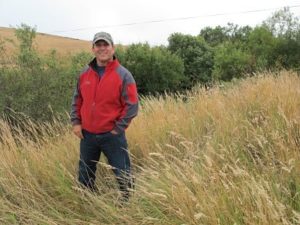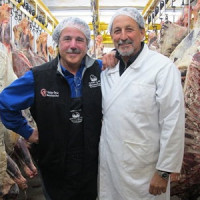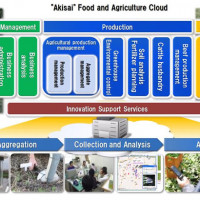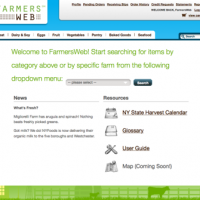[Editors Note: This is the second story in a series about meat distribution. Food + Tech Connect will run these stories every Monday for the next several weeks.]
 “The question is, do you really want to be a rancher, or do you want to be a meat company,” says Loren Poncia of Stemple Creek Ranch, as we stand in the middle of his family’s 1000 acres of organically certified pasture in Tomales, California. “Personally I want to be a rancher. I am good at it, and I love when a customer tells me, “that was the best meat I have ever had.” But I don’t love the logistics it takes to get it to them.”
“The question is, do you really want to be a rancher, or do you want to be a meat company,” says Loren Poncia of Stemple Creek Ranch, as we stand in the middle of his family’s 1000 acres of organically certified pasture in Tomales, California. “Personally I want to be a rancher. I am good at it, and I love when a customer tells me, “that was the best meat I have ever had.” But I don’t love the logistics it takes to get it to them.”
The amazing amount of work it takes ranchers like Poncia to get their meat from ranch to plate stems from three facts about the organic, local and grass-fed meat business in the U.S.
First, grass-fed cows and foraging pigs take a long time, and a lot of land, to grow to market size when compared to their (subsidized and feed lotted) corn-eating cousins. This makes “local” beef far more expensive to raise. And it means Stemple Creek beef needs to sell at a premium price for Poncia to recoup his costs.
Second, Americans like steak – tenderloin, ribeye, new york strip. Yet on a full grown steer, only 75 pounds are choice cuts of a 1200 pound live steer. If ranchers or distributors are to sell steaks instead of whole or half cows, they then have to find somewhere to unload hundreds of pounds of ground beef, shanks and oxtail. This means more individual sales, and more of Poncia’s time.
Thirdly, if you are not part of the large-scale meat distribution chain in America, it is physically difficult to get your meat from rural pasture to city-living consumer. Slaughterhouses are few and far between, and if you are not dealing in a lot of volume, large supermarkets are not likely to sell your brand. Nor are restaurant chains. Luckily for Poncia, his land is close a major metropolitan area (San Francisco) and city-slickers now interested in buying grass-fed beef directly from him. But most ranchers in the country are not so lucky.
So Poncia and his family have decided to take a web-based approach to selling their beef. On their simple but elegant website, visitors can learn about the farm’s practices and owners, then order 1/4, 1/2 and whole animals. The beef is picked up or shipped to nearby customers, or sold at the limited number of local butcher shops now specializing in breaking down whole animals (Lindy and Grundy in L.A. and The Local Butcher Shop, in Berkeley).
Poncia says 90% of the people now buying 1/4, 1/2 and whole animals on line are doing so for their first time – a wonderful trend, he says, but also time consuming. “All of these people are finding us on the web, and many of them then call us,” says Poncia. “So for every cow we sell, that means I have to talk and email with at least 4 people, sometimes more like 8 or 16. It is wonderful to have the connection with the customer, but it takes up a lot of my time.”
So how could technology best serve the needs of a small scale rancher who would rather not spend his time selling meat?
“Even if I used technology for inventory control, I would still have to have a person at a USDA facility slaughter and butcher the cow, package it, box it, drive it and get it to the customer,” responds Poncia. If there was a way to outsource those logistics while preserving the Stemple Creek brand name and price, Poncia says, that would be ideal.
“If there was a better way of doing it, we all would.”
Do you know of an interesting way ranchers, distributors or chefs are using technology to address issues in the meat distribution chain? Please join us in the conversation by using the comment box below, or by contacting Beth Hoffman at beth [at] foodtechconnect.com





